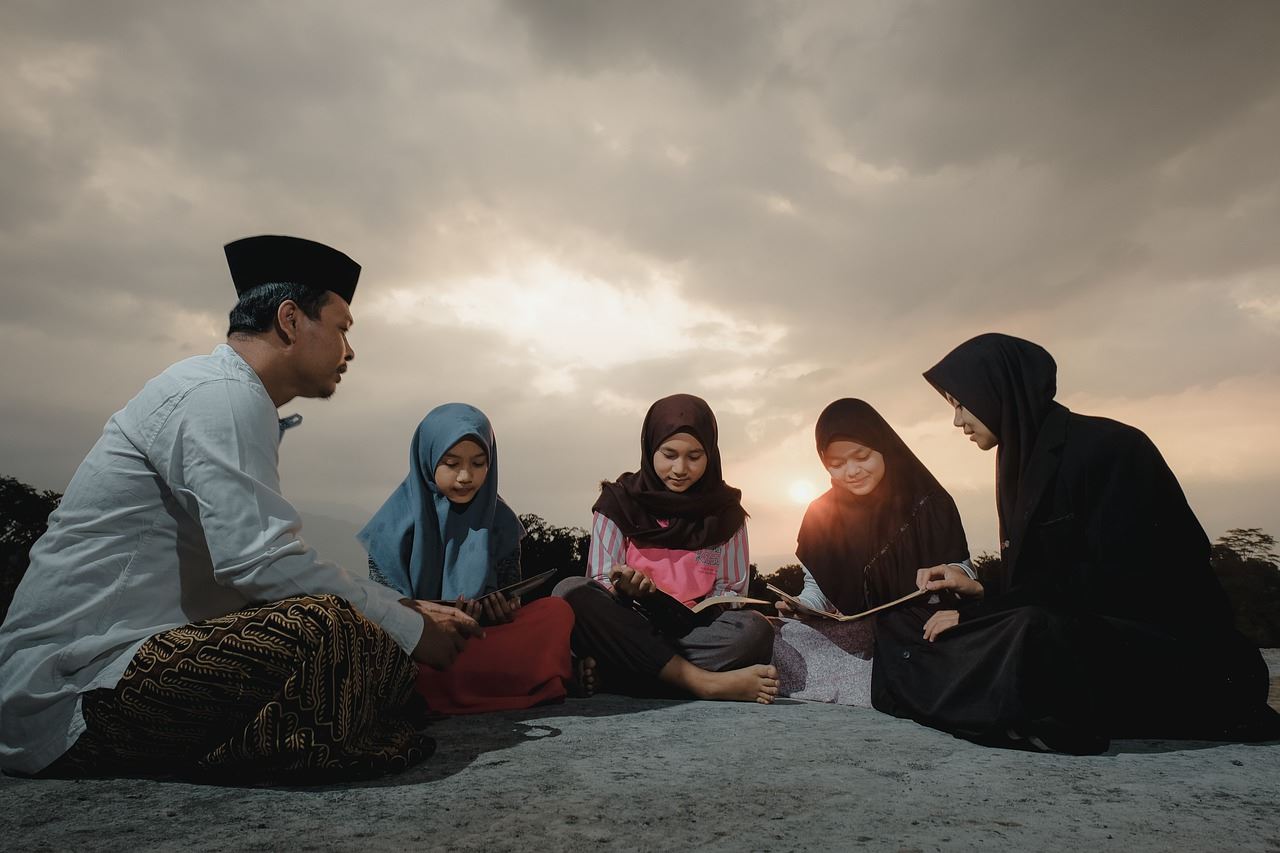FIGT Research Network and Counseling and Coaching affiliate discussed with Dr. Tim Stuart and Dr. Jang Eun Cho what helps Third Culture Kids (TCKs) and parachute kids build resilience so that they can thrive, even in the face of adversity.
.jpg)
It’s not easy growing up with a mobile life, crossing borders, cultures, and languages. What helps Third Culture Kids (TCKs) and “parachute kids” build resilience so that they can thrive, even in the face of adversity? And in what ways can parents, educators, counselors help these children build resilience?
On 4 December 2020, FIGT Research Network and Counseling and Coaching affiliate co-hosted a discussion with guests Dr. Tim Stuart and Dr. Jang Eun Cho to talk about “Third Culture Kids & Parachute Kids: Building Their Resilience.” The event was hosted by Dr. Danau Tanu, Co-Chair of the Research Network, and Sundae Bean of the FIGT Counseling and Coaching affiliate.

 What is a parachute kid?
What is a parachute kid?
Parachute kids are children who are sent to a new country — most commonly for educational reasons — to live alone or with a caregiver while their parents remain in the home country.
The name “parachute kid” comes from the idea that the parents bring the child over in a plane; the kid gets dropped off via parachute in the new country; and the parents fly right back to their home country.
Sending children off to school in another country is a fairly common phenomenon. Not only must these children adapt to a new environment — culture, language — but they must do it alone, away from their families.
Sending children away to study is not new
While the term “parachute kids” was coined in the 1980s to describe Taiwanese children who were sent to study in the United States, the practice of sending children away to study is not new and comes in many forms.
Historically, it was common for British administrators in colonial outposts to send their children back home to attend boarding schools. This practice has continued among the elite, leading to what researchers call the “boarding school syndrome.” At the other extreme end of the spectrum, indigenous children in North America and elsewhere were often forcibly separated from family and placed in residential schools.
Not only are parachute kids moving into a new world with possibly a new language, but they are doing it alone.
Today, missionary kids are commonly sent to boarding schools while parents work in remote areas. Also, both local and international schools in Singapore, for example, have become hubs for students from across Asia to study while living with host families or other caregivers.
These various experiences are not equivalent but may share some things in common.
The vast majority of the participants commented that this was the first time they heard the term; some — including Dr. Ruth E. Van Reken, co-author of Third Culture Kids — even realized that they were in fact parachute kids!

What are some challenges parachute children face?
Jang works with parachute children and TCKs and she observes that mobility can be very traumatic for children.
Not only are parachute kids moving into a new world with possibly a new language, but they are doing it alone. They are suddenly responsible for managing life.
“Doing household chores, checking their own appointments, managing homework, money, and health…. It’s a huge mental load,” Jang says.
“Give children challenges that can be overcome in steps, so that when the child is faced with big adversity, they have the “muscle” to overcome it.” —Jang
A move to another country — whether with the family or alone — also changes family dynamics. Even if the child is moving with their family, they will experience generational, cultural gaps.
But the separation and distance for parachute kids make it even more difficult to maintain the parent-child connection; the cultural and language gaps will be bigger.
“While the parents’ identity stays permanently in their home country, there will be a gap [with the child’s experience and identity],” says Jang. “It’s new territory for parents too, because they’re not moving with their child and so they can’t understand what’s going on in their kid’s inner life.”
What is resilience?
When faced with these difficult conditions, what allows a child to overcome the challenges versus succumbing to them? What gives a child the resilience to overcome adversity?
Resilience is often mistaken for endurance, notes Sundae, an intercultural coach. “But enduring leads to depletion,” she says, “[whereas] resilience leads to rejuvenation — you are able to restore what is lost, build what you need to be a productive member of the community, be happy and balanced.”
“...enduring leads to depletion, [whereas] resilience leads to rejuvenation.” —Sundae
Tim agreed: “Resilience is associated with avoiding adversity [and] … protect[ing] children from adversity. But protecting a child is impossible. It does the opposite of creating resilience; it creates weakness, the inability to cope with adversity.”
He went on to say that it’s not about protecting the children from adversity but creating environments where TCKs can use adversity.
A child who can overcome adversity vs a child who succumbs to it
When Tim was working as a college counselor at the Lummi Nation Reservation in Washington state, the students told him, “Don’t pay too much attention to us because we’re ‘at risk.’” It stunned him to hear a child use this label on themself. Tim heard the underlying message: “I’m at risk of failure, of not making it.”
All children experience adversity. But while some children can believe that adversity is going to contribute to their growth, others see that it will diminish them and will give up.
“The opposite side of the ‘children at risk’ coin is ‘children at promise.’” — Tim
Tim decided to research what the difference was between these children. And he found that two factors made a difference: a belief system (seeing oneself as part of a bigger scheme of things) and having an adult who cared.
When Tim talked to the children on the Lummi Nation Reservation about turning points in their lives, they often told him it was when a person stepped into their lives and believed in them.

And that was his experience too. “I grew up in adversity, so much moving around. But the people who stepped into my life [who showed me], ‘you can do this, you can overcome it’ — that made the difference.”
Interestingly, Tim found that children who grew up in affluence often identified adversity as the turning point that forced them to grow up. When they failed was when the more affluent children realized they were meant for something bigger than themselves.
What can parents do?
Jang tells the families she works with that they have to show their children that there are challenges, but there are ways to turn those challenges into positive outcomes. Her suggestions:
☑ Give children challenges that can be overcome in steps.
Parents should give their children challenges that can be overcome in steps, so that when the child is faced with big adversity, they have the “muscle” to overcome it; they feel “yes, it’ll be challenging but I can do it.”
☑ Be humble.
Jang advises parents to be humble. “Know you cannot know the whole world of your child…. As an Asian parent, I want to do everything for my child — but…we can’t protect our children from all adversity. They will have to face adversity.”
☑ Recognize what your goals are for your child.
“I know you love your children. So focus on the bigger goals — what does it look like? Often, it’s along the lines of ‘I want my child to be a happy, healthy, productive part of their society.’ When you know your big goal, you can think about how you’re going to raise your child.”
☑ When moving, help your child connect to a social network.
For moves, parents of younger children and elementary schoolers can help their children to adapt by helping them find a social network.
☑ Understand that your child’s “love language” can be different from yours.
The “love language” of kids — how children perceive love — can be very different from that of the parents — how parents express love.
“All children really need to hear that they’re loved, hear what the parents think,” says Jang. But in Asian families, for example, there is a lot of unspoken language that happens within a family. “That unspoken language might be difficult for the kids [to recognize]. Parents have to verbalize their thoughts.”
What should educators and parents avoid?
Danau commented on the negative impact of “gaslighting” on TCKs, when adults continuously communicate and focus on only the positives of mobility and refuse to recognize the challenges. It causes additional mental stress, causing confusion and self-doubt.
“[To experience] the pain of departure and leaving friends behind, and then being told not to worry, that we’ll make new friends. On the surface, this sounds encouraging — focus on the future. But this counsel bypasses the first step in the grief process, acknowledging the loss,” says Danau.
“If parents/guardians could acknowledge the child's loss, they could both care for what is being left behind AND anticipate good things up ahead.”
“As children, we need to have adults who can see past our coping mechanisms and see us for who we are.” — Danau
Adults also need to keep in mind that children experience mobility differently from grown-ups. The move happens during crucial developmental years and children often are not given a choice. If they are young, they are also dependent on their parents to keep in touch with those they left behind.

What can schools and educators do?
In the case of parachute kids, the parents may not be there and other adults, such as educators, may need to step up to provide the kids the support they need.
“The investment in kids will make the difference between a kid being successful and not. We can make a difference,” affirms Tim.
He calls upon educators — counselors, pastors, anyone who works with children — to step into the children’s lives rather than retreating from them.
“The opposite side of the ‘children at risk’ coin is ‘children at promise.’” — Tim
He points out that this also means schools need to create policies that allow schools to step into a child’s life in moments of adversity. For example, when a child is caught taking drugs or smoking, the typical school response is: “we’re going to push you out.”
“But that’s the opposite of what schools should be doing,” says Tim. “That’s when the schools should be stepping in.”
Tim also invites educators and other adults to see the children — see them and hear them.
“Our agenda is to get them educated, pass the exams — but we don’t pause long enough to listen, see who these kids are. Many schools are failing in this area, particularly when it comes to transitions, kids who are global nomads.”
Bios
 Timothy S. Stuart, Ed.D, is the Head of School at the International Community School of Addis Ababa and former Executive Director of Strategic Programs at the Singapore American School. He serves as the chief architect for research and development and supports strategic school reform.
Timothy S. Stuart, Ed.D, is the Head of School at the International Community School of Addis Ababa and former Executive Director of Strategic Programs at the Singapore American School. He serves as the chief architect for research and development and supports strategic school reform.
Tim has been an international and cross-cultural educator for 25 years serving schools in Turkey, Switzerland, Indonesia (High School Principal of Jakarta International School), Singapore (High School Principal of Singapore American School) and on a Navajo reservation in the United States.
His passion to support internationally-mobile children led Tim to co-author Children At Promise and Raising Children At Promise. He is also a co-author, editor and contributing author of multiple other books.
 Jang Eun Cho, MD, is a board-certified child, adolescent and adult psychiatrist in the US with expertise in both psychopharmacology and psychotherapy and Director of the Consortium at Center for Cross Cultural Student Emotional Wellness, which is partner to the Massachusetts General Hospital (MGH) and affiliated to Harvard Medical School.
Jang Eun Cho, MD, is a board-certified child, adolescent and adult psychiatrist in the US with expertise in both psychopharmacology and psychotherapy and Director of the Consortium at Center for Cross Cultural Student Emotional Wellness, which is partner to the Massachusetts General Hospital (MGH) and affiliated to Harvard Medical School.
As a bilingual and bi-cultural psychiatrist, she formerly headed Hope Clinic, a free mental health clinic for under-served Korean Americans, and now runs her own telepsychiatry practice, Cultivate Psychiatry.
Jang is also founder and co-chair for the Asian Caucus in the American Academy of Child Psychiatry and is involved in various advocacy work for the Asian American and Pacific Islander (AAPI) communities in the US.
 Danau Tanu, PhD, is author of Growing Up in Transit: The Politics of Belonging at an International School, the first systemic study of structural racism in international schools. She is an Honorary Research Fellow at the School of Social Sciences at the University of Western Australia and a Visiting Research Fellow at Waseda University, Japan.
Danau Tanu, PhD, is author of Growing Up in Transit: The Politics of Belonging at an International School, the first systemic study of structural racism in international schools. She is an Honorary Research Fellow at the School of Social Sciences at the University of Western Australia and a Visiting Research Fellow at Waseda University, Japan.
Danau has published anthropological studies on Third Culture Kids and mixed-race identities and is a contributing author to Writing Out of Limbo: International Childhoods, Global Nomads.
She is also Co-Chair of the FIGT Research Network and Co-Founder of TCKs of Asia and Third Culture Stories podcast.
 Sundae Bean is a solution-oriented coach and intercultural strategist who specializes in minimizing time to adapt and maximizing satisfaction and success abroad. Sundae helps individuals adapt as quickly (and painlessly!) as possible to the ever-changing circumstances of international life.
Sundae Bean is a solution-oriented coach and intercultural strategist who specializes in minimizing time to adapt and maximizing satisfaction and success abroad. Sundae helps individuals adapt as quickly (and painlessly!) as possible to the ever-changing circumstances of international life.
Her expertise is sought out by clients ranging from European multi-national organizations to international NGOs, from West and East African country directors to seasoned expat spouses. Sundae helps individuals and organizations expedite success, create meaningful connections (abroad and at home), and cherish the experience.
Her podcast Expat Happy Hour has been rated No. 1 episode in Places and Travel on iTunes. She is a member of the Forbes Coaches Council, the founder of Expat Coach Coalition and leader of the Facebook community Expats on Purpose.
Resources
Families in Global Transition
-
FIGT membership information
-
FIGT online bookstore: Browse for resources on Third Culture Kids. Purchasing through the FIGT Online Bookstore supports our David C. Pollock Scholarship at no extra cost to you. As an Amazon Associate, FIGT earns a small commission from qualifying purchases.
To continue the thinking and conversation please join us at
Mentioned by discussants
 The FIGT Research Network seeks to to bring together producers and consumers of research to support the growth, success and well-being of people crossing cultures around the world. You can join the Research Network mailing list from their page.
The FIGT Research Network seeks to to bring together producers and consumers of research to support the growth, success and well-being of people crossing cultures around the world. You can join the Research Network mailing list from their page.
[Written and edited by Ema Naito and Danau Tanu]

